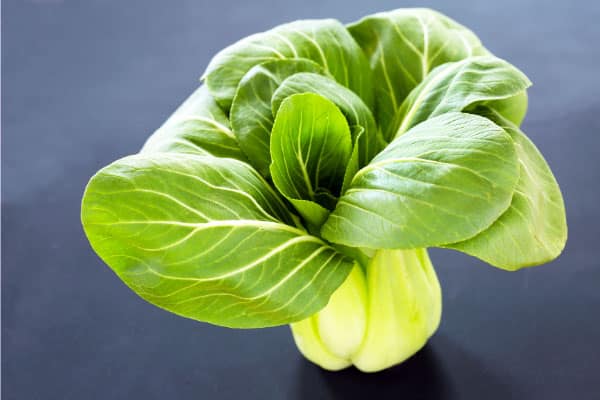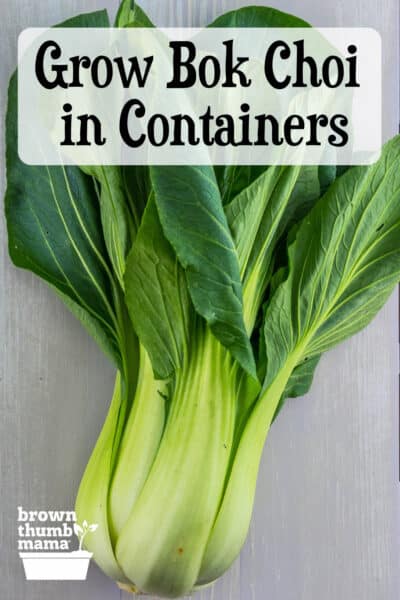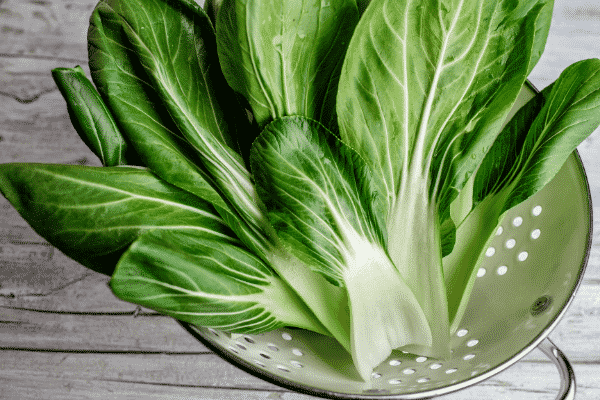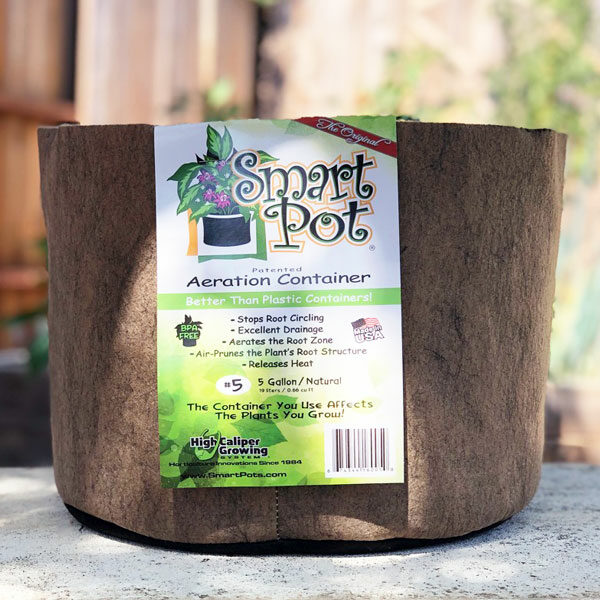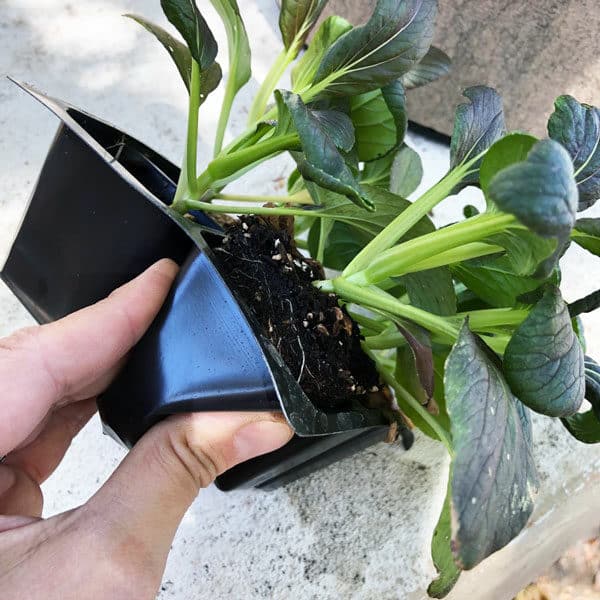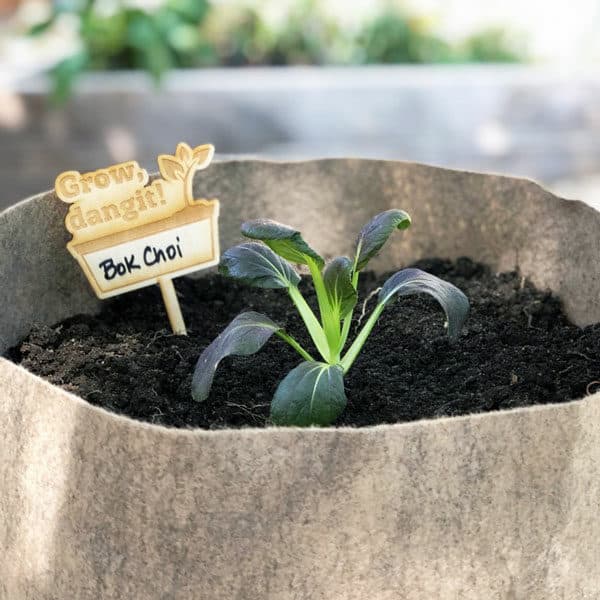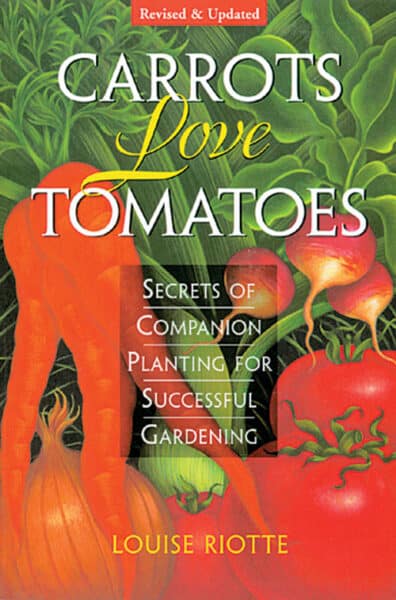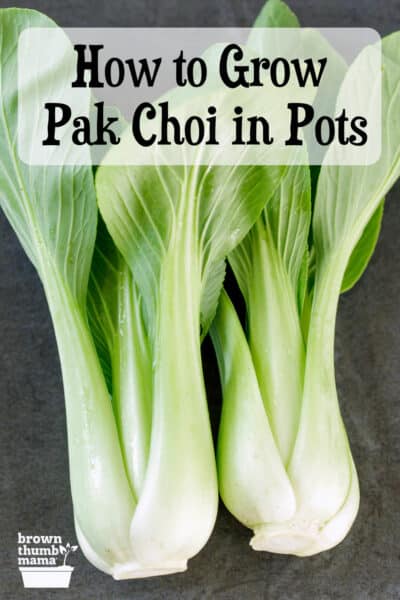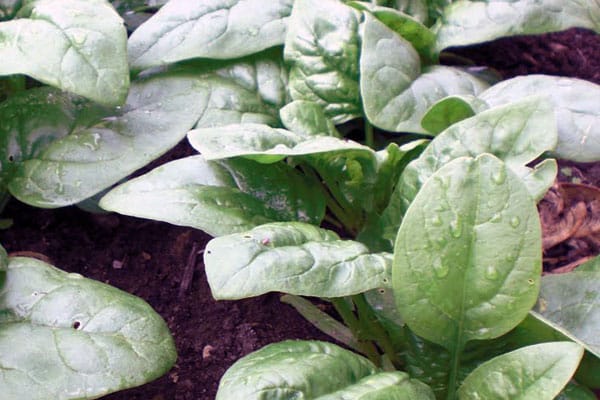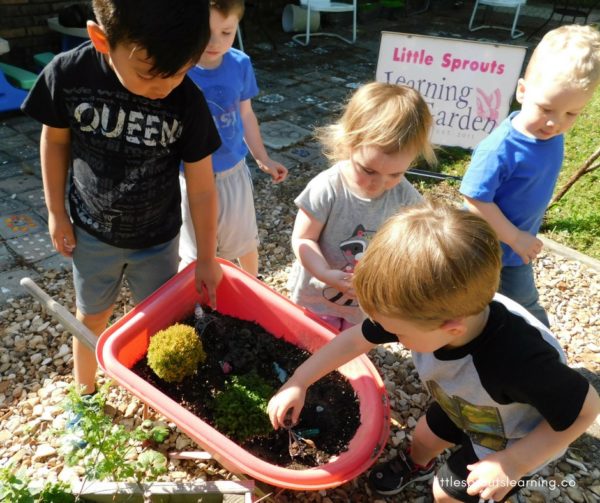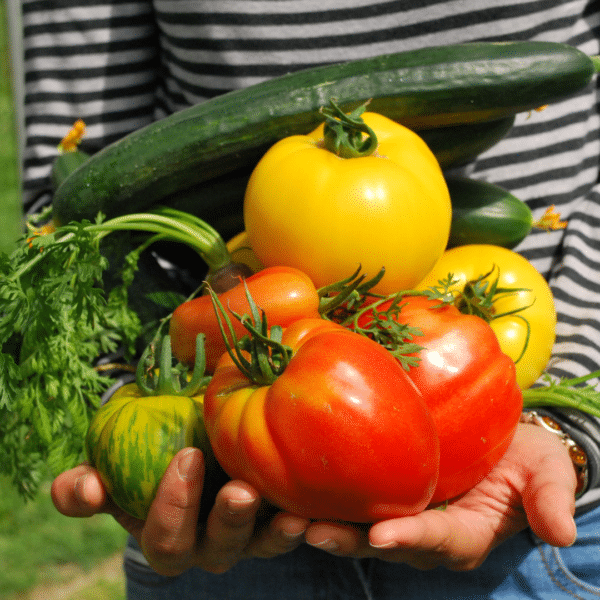This post may include affiliate links.
If you make a purchase, I'll earn a small fee at no extra cost to you.
Bok Choi or Pak Choy is a delicious vegetable that’s often overlooked by home gardeners. It thrives in pots or containers and is easy to grow. Follow these tips to grow bok choi in your container garden!
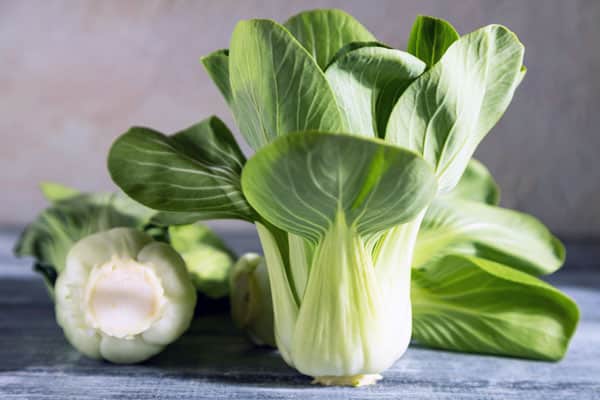
Thank you to Smart Pot® for sponsoring this article.
Do you know this vegetable? If you’re a fan of Asian cooking, like me, you know exactly what this is.
Bok choi (sometimes called pak choy) is a non-heading type of cabbage. It’s a delicious addition to stir-fry, salads, soups, and many other dishes.
Just like traditional cabbage, its leaves are tender and the stalks are firm and crunchy. Bok choi is low in calories and high in vitamins A, C, and K. Plus, it thrives in pots or containers and is easy to grow.
What more could you want in a veggie? Grab your seeds or starts and let’s get out in the garden!
Best Varieties for Container Planting
Bok choi is sometimes called pak choy, and they are simply different translations of the same name. There are two main types of bok choi: standard (white stem) and Shanghai (green stem).
Tatsoi, yau choi, and gai choy are related to bok choi but are not the same plant.
You can plant full-size or dwarf/miniature bok choi in containers. I prefer the smaller varieties because they mature quickly and are more tender.
Toy Choy is a minature variety that tolerates heat and is great for planting in containers.
Baby Choi is a container variety that’s ready in about 35 days and resists bolting (going to seed).
Standard Pak Choi can grow over 12 inches tall.
Shanghai Pak Choi is smaller and milder in flavor.
What is the difference between dwarf, baby, and standard bok choi?
Dwarf bok choi are picked when very small, around 3 inches. The leaves are sweet and tender, so they’re great for salads. Sometimes tatsoi, which is a similar size, is sold as rosette bok choi. Tatsoi has a more pronounced mustard flavor, so beware!
Baby bok choi are harvested when 5 inches in size. This size is good for cutting in half and grilling or steaming.
Standard bok choi are harvested around 7 inches. At this size, it’s best to separate the individual leaves for cooking.
Large bok choi are the full-grown version of the plant, and can be up to 12 inches. These can have a fairly strong flavor, and the stems should be separated from the leaves due to the differences in cooking time.
Best Containers for Bok Choi
Full-grown bok choi can grow to be pretty large (see above), so I decided give mine lots of space. I’m planting it in a 5-gallon Smart Pot.
Smart Pots are my favorite for container planting. They’re durable fabric planters that are made in the USA. They’re weather-resistant, UV resistant, and come in lots of different sizes.
I’m growing citrus trees, blueberries, and potatoes in my Smart Pots this year.
Smart Pots are BPA and lead free, which is important when you’re growing food. The cheaper brands can’t make that promise.
Sun, Water, Soil
Sun
Bok choi needs at least 6 hours of direct sun to thrive, so I placed my Smart Pot in a sunny corner of the backyard. If your bok choi gets a little afternoon shade, that’s fine too.
Water
Consistent watering is important for bok choi. Inconsistent watering can cause it to bolt, or go to seed. I use a drip system, which is important for conserving water in the garden.
Since Smart Pots are made of fabric, you might think this would cause your plant to dry out too quickly. But if you’re using quality potting soil, the soil will retain the water properly.
It’s actually good that water drains through the Smart Pot! This allows excess salts and fertilizers to wash away, instead of being stuck in the bottom of the pot and burning the roots of your plant.
Soil
Your bok choi will be happiest in well-drained soil that is rich in organic matter. I like to use EB Stone Raised Bed mix, blended with some homemade compost.
Please don’t scoop up a bunch of dirt from your yard for your container plants. Garden soil is too dense, and could have fungus, microbes, seeds, bugs, or other critters that will damage your veggies.
Here’s how to choose the best soil for container gardening.
How to Plant Bok Choi in Containers
Start your seeds directly in the soil when the soil temperature is at least 60º F. Here in Zone 9, we can plant bok choi in the early spring and again in the fall.
Sow your seeds ¼” below the surface of the soil. They’ll sprout in about 7-10 days.
If you’re planting bok choi seedlings, like me, carefully push each plant out of the container. Don’t pull on the leaves, because you could rip plant from the roots.
Gently tease the roots apart and nestle the seedling in the soil with the stem above ground.
You might even like to add one of my funny plant markers!
Pests, Diseases, Companion Plants
Because bok choi is part of the brassica family, they have the same pests as broccoli, cauliflower, and cabbage.
Container planting makes it easy to protect your bok choi from cabbage worms–just slip this protective cover over the entire Smart Pot.
You might also encounter earwigs (here’s how to get rid of them) and snails or slugs, which can be eliminated naturally.
If you have a little extra room in your Smart Pot, add a companion plant along with your bok choi. What’s a companion plant? It’s a plant that helps another plant grow, or keeps pests away. Sage or rosemary are great companion plants for bok choi.
I learned this from Carrots Love Tomatoes: Secrets of Companion Planting for Successful Gardening, which is a must-read for us vegetable gardeners.
Harvesting & Recipes
You’ll use different harvesting techniques depending on the size and use for your bok choi.
If you’re harvesting when plants are baby or small size, slice the stem cleanly about an inch above ground. Sometimes the root will sprout another, smaller plant.
If you’re harvesting at standard or large size, snip off the outer stems with pruners. Leave a few stems in the middle to continue growing.
Don’t pull the plant completely out of the ground until it has gone to seed or refuses to grow any more leaves. You can get quite the continuous harvest if the weather cooperates.
There are lots of yummy recipes for your bok choi. It’s delicious in Loaded Fried Rice, and we like it stir-fried with a bit of Black Bean Garlic Sauce. Yum!

